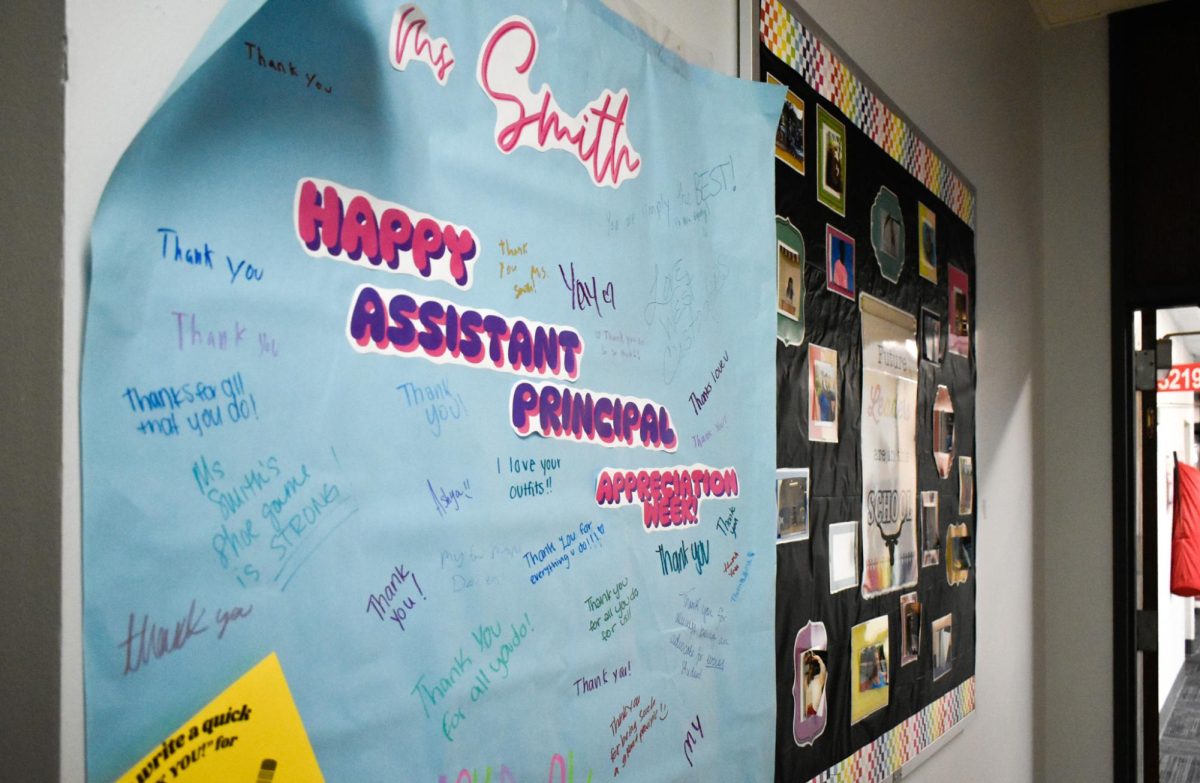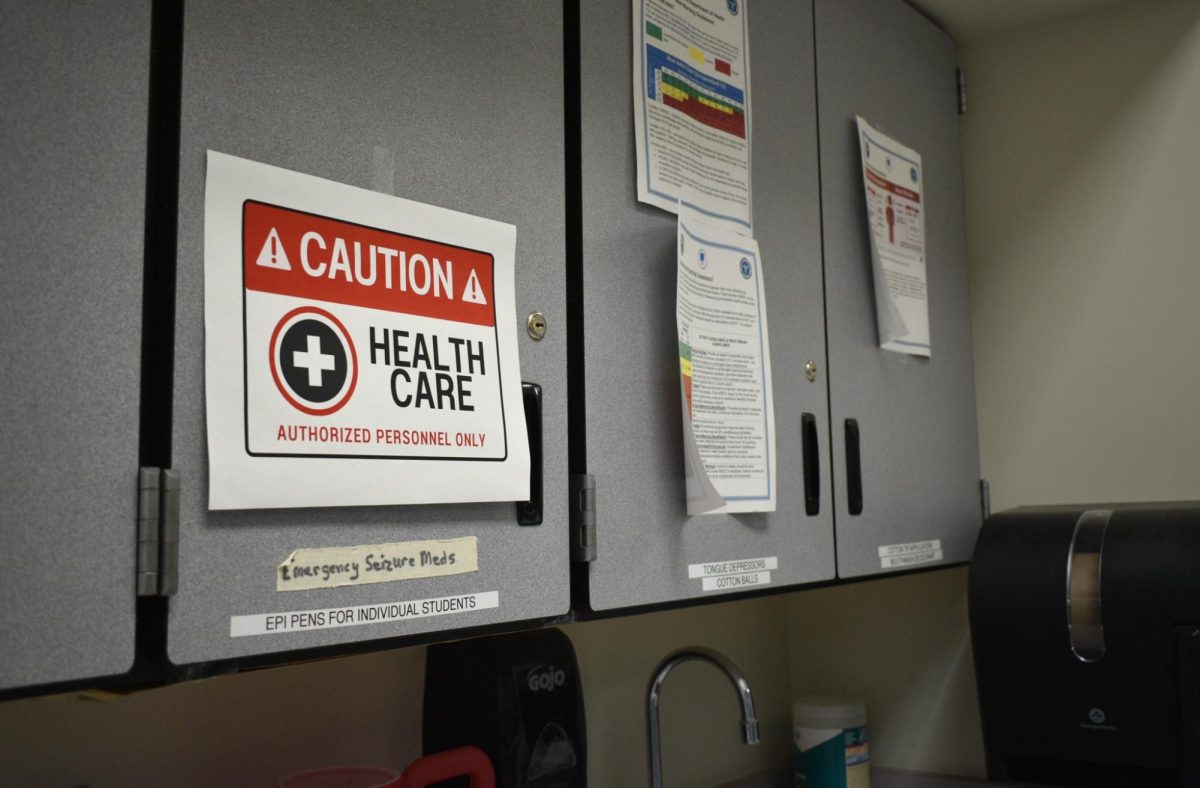Stepping into the cafeteria, you look down at your lunch tray. Instead of large portions, you have a grain, meat, veggie and a carton of juice. From reducing portion sizes, to “healthifying” the food used, the lunch menu has been changed and students and administration are expressing their views on the new restrictions.
According to the National Conference of State Legislatures, the meal reimbursement that schools receive per meal has increased six cents, making schools across the country change their menu to align with new restrictions. This is the first increase in 15 years.
This shift in the menu and the increase in reimbursement rates was prompted by First Lady Michelle Obama’s new health initiative.
“We can make portion sizes smaller and emphasize quality over quantity. Fast food has become the everyday meal,” Obama said in a speech to the National Restaurant Association Meeting.
The new changes include a requirement of three healthy parts for each meal. There must be grain, meat and fruit/veggie for each meal.
“We bake our fries now – no more frying. There are big changes at the snack wagon. Smaller portion sizes, baked chips, baked goods are now at least 51% whole grain, calorie, fat and sugar limits on items,” Cafeteria Supervisor Barb Kohring said.
Yet Kohring believes these restrictions are too harsh for high schoolers due to their busy lifestyles.
“At the high school level, I think the restrictions should be eased as we have many athletes who require more calories than what they are getting with the meal plans. But we are limited with new guidelines,” Kohring said.
Freshmen and cross country runner Anna Chen explained her typical cafeteria lunch.
“It’s really small, and we are getting less for more. I don’t think the price has changed, so you’re getting smaller portions for the same price. This makes kids go to the snack bar or get seconds which is even more unhealthy. I do cross country, so I find myself eating a lot, but the lunch is just not filling enough,” Chen said.
On the quality of food, Chen said, “Some of the salad looks old, like its been sitting there for awhile.”
However Kohring believes that quality of the food offered is sufficient.
“Our salad bar is wonderful. I eat a spinach salad everyday along with some of the entree’ items we serve,” Kohring said.
Other students also contributed their opinion over the new food.
“I think it would be really great if they gave you healthy options, but that’s all it should be: an option. They shouldn’t ram it down your throat, ” senior Alex Galvin said.
To combat these restrictions, a student who wishes to remain anonymous, has made a business.
“We, my business partner and I, sell everything from the tos family. Cheetos, Doritos, Fritos, etc.” This student said about their new business. I’m trying to monopolize the black market of snacks. Im trying to be the next Rockefeller and get in on it before it’s gone.”

![Leaning on the podium, superintendent Melissa Schneider speaks to Parkway journalism students during a press conference. Schneider joined Parkway in July after working in the Thompson School District in Colorado. “My plan [to bond with students] is to get things on my calendar as much as possible. For example, being in [classes] is very special to me. I am trying to be opportunistic [meeting] kids [and] being in [the school] buildings. I have all the sports schedules and the fine arts schedules on my calendar, so that when I'm available, I can get to them,” Schneider said.](https://pwestpathfinder.com/wp-content/uploads/2025/09/IMG_5425-1200x943.jpeg)


![Red, white and blue, the American flag holds the values of our democracy. The fight that we once endured has returned, as student journalists and senior correspondents across the country are losing their voices due to government control. “[Are] the White House and [the] government limiting free speech [and] freedom of the press? Yes [they are],” chief communications officer of the Parkway School District and former journalist Elisa Tomich said.](https://pwestpathfinder.com/wp-content/uploads/2025/03/Untitled-design-14.jpg)
![A board in the Parkway West counseling department displays pennants of selective universities. With a wide range of students interested in attending, it’s important that these schools have clear priorities when deciding who to admit. “[Washington University] had the major that I wanted, psychology, philosophy, neuroscience. That's a holistic study of the brain, and [WashU is] the only college in the world that offers that. That's the main reason I wanted to go; I got into that program,” senior Dima Layth said.](https://pwestpathfinder.com/wp-content/uploads/2025/02/Flag-1.png)

![Within the U.S., the busiest shopping period of the year is Cyber Week, the time from Thanksgiving through Black Friday and Cyber Monday. This year, shoppers spent $13.3 billion on Cyber Monday, which is a 7.3% year-over-year increase from 2023. “When I was younger, I would always be out with my mom getting Christmas gifts or just shopping in general. Now, as she has gotten older, I've noticed [that almost] every day, I'll open the front door and there's three packages that my mom has ordered. Part of that is she just doesn't always have the time to go to a store for 30 minutes to an hour, but the other part is when she gets bored, she has easy access to [shopping],” junior Grace Garetson said.](https://pwestpathfinder.com/wp-content/uploads/2024/12/DSC_0249.JPG-1200x801.jpg)

![Senior Sally Peters stands in the history hallway, contemplating her choices in the 2024 United States and Missouri elections on Nov. 5. As a member of Diplomacy Club, Peters has discussed key candidates and issues in contemporary American politics. “[As students], we're starting to become adults. We're realizing how much the policies that are enforced and the laws that make it through the House and Senate are starting to affect us. [Opportunities such as] AP [U.S.Government] and Diplomacy Club [make elections feel] a lot more real,” Diplomacy Club vice president and senior Nidhisha Pejathaya said.](https://pwestpathfinder.com/wp-content/uploads/2024/10/Flag-1-1.png)
![Mounting school pressure can leave many students overworked and overstressed. Schools must give students the necessary resources to help assuage student mental health issues and prevent the development of serious crises. “The biggest thing [schools] can do [to protect student mental health] is offer more time [to do work], like a study hall, or offer more support from teachers so that students don't feel stressed out and can get help in areas that they need,” senior Bhavya Gupta said.](https://pwestpathfinder.com/wp-content/uploads/2024/09/unnamed-4.jpg)